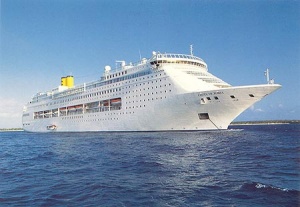Cool water cruising brings passengers north

Cool water cruising is attracting a record number of European vacationers this year, with double-digit growth forecast for the number of passengers booking cruises to the Arctic regions, the Norwegian fjords, and the British Isles in 2012, according to new data compiled for Cruise Lines International Association and the European Cruise Council.
The number of passengers cruising the Arctic region, including Iceland, is expected to rise 37 per cent compared with last year, the data show.
Cruises to the Norwegian fjords are likely to see a 29 per cent rise in numbers of passengers.
The British Isles are also forecast to see strong growth in the number of cruise passengers, up 16 per cent, while the Baltic Sea, which accounts for the largest number of cruises in the region, is expecting a six per cent increase.
Overall, according to the data prepared by G.P. Wild (International) for CLIA and the ECC, a total 1.49 million cruise passengers are expected this year in the Northern European region, up 16 per cent from 1.28 million last year.
“The Northern European cruise market is growing rapidly, benefitting both from the region’s newly extended range of destinations and also from the cruise lines’ desire to extend their season here well into the colder months of the year,” said Bo Larsen, director of Cruise Baltic, an association of 25 Baltic Sea destinations and a partner to the European Cruise Council.
“Northern Europe has become a must-visit region for international cruise passengers, attracted by its diverse and impressive attractions, including world-class cities, small towns and hidden gems, and of course its breath-taking natural beauty,” he added.
In all, cruise ships from a total 44 cruise lines serve a total 253 ports in the Northern European region, of which 52 are in the Baltic, 78 in Norway and the Arctic region, and 123 in North Western Europe (including the British Isles, North Sea and Atlantic ports).

